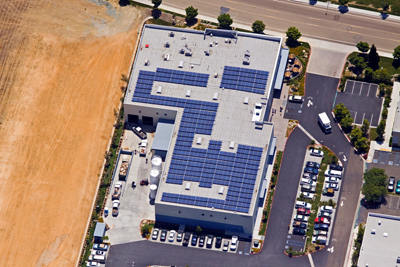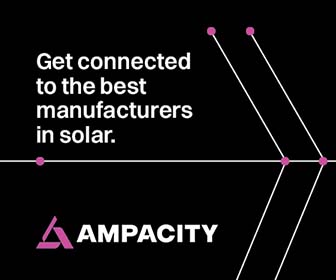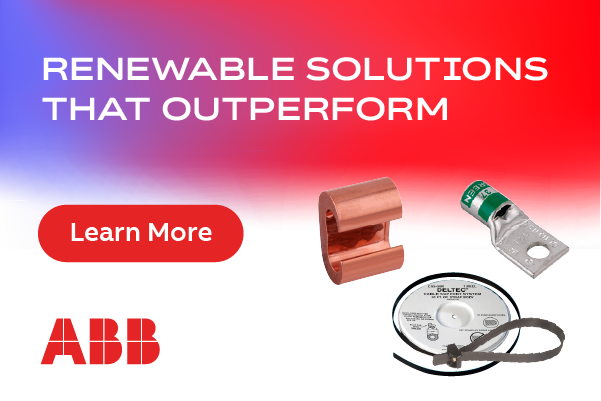Solar Gives Small Business an Edge with Energy Savings
 With increasing pressures and regulations on small businesses, it’s even more difficult to maintain profits and owners are looking for any edge they can get. In addition to standard financial pressures, such as a fluctuating economy, fickle consumers, and rising labor, healthcare, and energy costs, business owners must monitor their environmental impact.
With increasing pressures and regulations on small businesses, it’s even more difficult to maintain profits and owners are looking for any edge they can get. In addition to standard financial pressures, such as a fluctuating economy, fickle consumers, and rising labor, healthcare, and energy costs, business owners must monitor their environmental impact.
While energy production and transportation contribute 33% and 28% of greenhouse gas emissions in the United States, respectively, industry, commercial, and residential buildings contribute another 31%, according to the Environmental Protection Agency (EPA). Many states have also passed tough environmental regulations, which require commercial buildings to disclose their emissions and mitigate them.
Implementing solar power can help businesses minimize their environmental impact, reduce electricity costs, and contribute to their brand affinity by promoting corporate social responsibility—all while appealing to the many consumers who consider environmental issues significant. And, it’s never been easier for businesses to go solar.
According to a recent report by the US Solar Energy Industries Association (SEIA), solar panel costs were 60% lower in the second quarter of 2013 than they were in early 2011. As a result, the 832 megawatts (MW) of solar solutions installed in the US in Q2 2013 represent a 15% growth over the previous quarter, validating the claim that solar energy is an increasingly popular option to help commercial buildings reduce their own carbon footprint and contain energy costs.
Although the price of electricity may rise and fall, photovoltaic (PV) electricity is, essentially, as free as the sun is shining. Plus, the cost of the equipment necessary to produce solar energy has fallen dramatically in the last decade, giving solar power a higher return on investment.
In an attempt to make solar power even more feasible, several states offer incentive programs, such as rebates and grants, renewable energy credit purchases from solar kilowatt-hours produced, and financing products like Purchasing Power Agreements (PPAs), leases, and loans. The latest trend is the Property Assessed Clean Energy (PACE) program, which works for companies that own their buildings. PACE allows business owners to take a loan and repay it over 20 to 30 years through their property tax bills.
Wise investments
Many businesses, from breweries to housing developments, universities, and even airports, are installing PV modules to help minimize carbon emissions and reduce electricity costs. The owners of a small restaurant in Carlsbad, California, for example, first installed a 10.7-kilowatt (kW) PV system on their home in 2011. Impressed by the performance, efficiency, and reliability of solar power, the owners decided to incorporate PV solar in their business as well, installing a 117 kW rooftop system and two electric vehicle charging stations at their Pizza Port restaurant. The business even features a solar monitoring system, so customers can monitor how much electricity the solar power system is being produced at any given time.
Long-term energy savings, a reduced reliance on fossil fuels, and the related environmental benefits are often reasons enough for entrepreneurs to consider implementing solar energy in their businesses. But, here are a few key tips companies should consider when going solar:
1. How long have the solar providers been in business?
Going solar can be a wise investment. However, research and fact-checking is imperative. Investigate the installer and ask for references. Review various solar panel brands, as there’s a difference in quality and reliability from one producer to the next. Can a 20-year warranty from a manufacturer that just entered the market five years ago be trusted? Do lower prices mean better value, or does one just get what one pays for? Compile the facts, and trust your judgment.
2. In what ways is it possible, or best, to achieve optimal energy efficiency?
It’s always less costly to eliminate inefficient electrical loads, instead of buying more solar modules to power them. Technology is making appliances and electrical devices much more energy-efficient. The planning stage for a solar electric system is an ideal time to identify any appliances that may be grossly inefficient, and consider replacing them. Newer refrigerators and dishwashers, for instance, can contribute to a significant reduction in total power demand. Optimizing energy efficiency is the best first step in the process of adopting renewable energy.
3. What is the current electrical usage, and how much can be offset by solar energy?
A business’ electricity bills contain all of the data required to calculate how many kilowatt-hours of power are required per year. A qualified solar installer can use this data, and the prevailing sun exposure conditions of the venue, to determine how much peak generating capacity needed—whether that’s to offset just part or all of a business’ total energy demand. First, determine a realistic energy goal for your business, and then match that to the ideal system.
4. Where is the optimal location for a solar system to be installed?
Though solar electric systems are typically installed on rooftops, not every roof is ideally situated in a sunny, southern exposure, which isn’t shaded by trees or other structures. Even if a rooftop is optimally located, it also must support the weight of a solar PV system. Many roofs can’t handle the load so, if this is the case, other option should be considered. A solar carport structure or ground-mounted system can be an effective alternative that unlocks the value of unused space.
5. How will I pay for my solar electric system?
A solar energy system is a significant initial investment, but one that has the potential to offset rising energy costs for years to come. To best manage the expense, know the financing options available. It’s often possible to benefit from a range of financing assistance, including tax breaks, rebates, incentives, and grants. The Database of State Incentives for Renewables & Efficiency (www.dsireusa.org) is a comprehensive source of information on state, local, utility, and federal programs supporting renewable energy.
PV solar has never been more cost-effective for businesses of any size, including small businesses, to implement. It’s worth the time investigating this valuable, renewable power source, while taking advantage of lower installation costs and increased long-term profits and energy savings. And, perhaps, most importantly, solar energy complies with many current (and, likely, any future) environmental laws and regulations—while serving to benefit the environment itself.
Cecilia Aguillon is the director of Marketing & Government Relations at Kyocera Solar Inc.
Kyocera Solar Inc.
www.kyocerasolar.com
Author: Cecilia Aguillon
Volume: November/December 2013











.png?r=6355)
